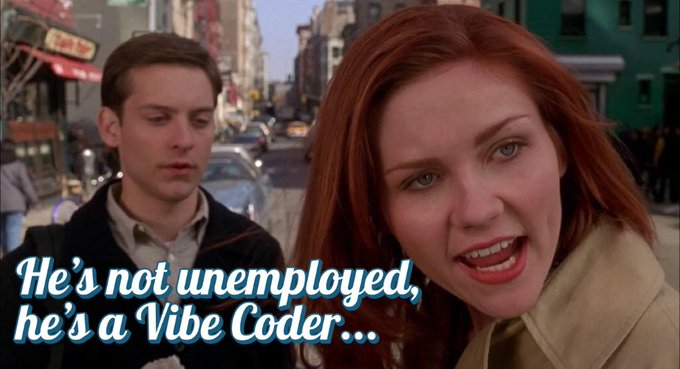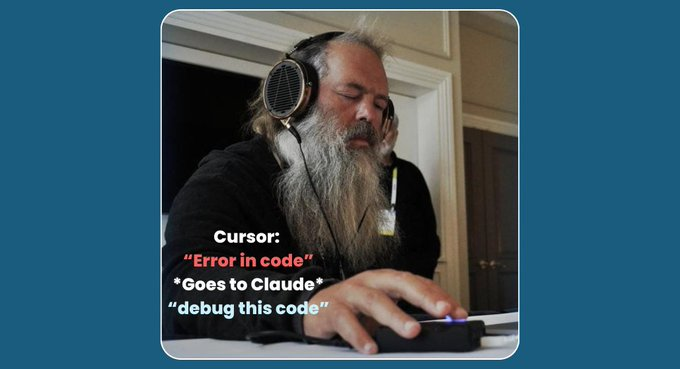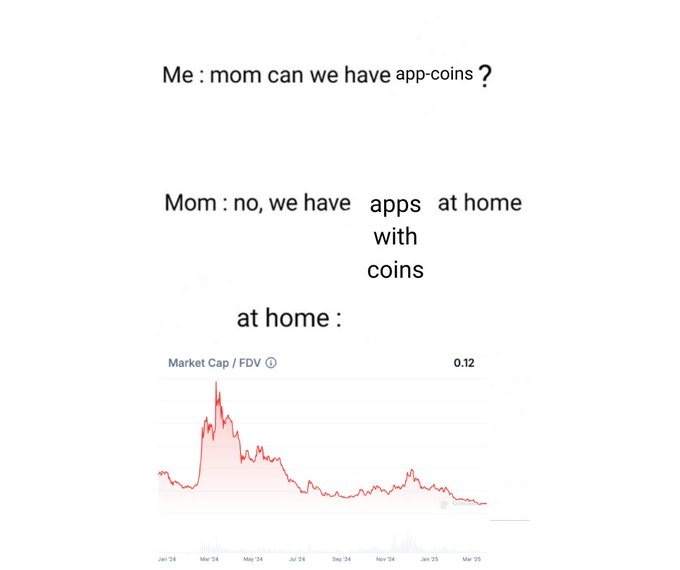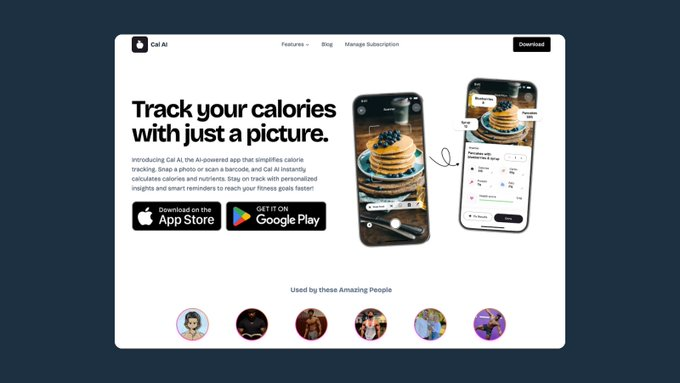Author: Grant blocmates
Compiled by: Tim, PANews
In the latest Y Combinator startup batch, members were asked, "What percentage of your codebase is generated by AI?" A quarter of the entrepreneurs indicated that 95% of their code is generated by AI.
Good or bad, Andrej Karpathy (former Director of AI at Tesla and founding member of OpenAI) coined the term "Vibe Coding."
In short, this means that tech novices like you and me can generate code by inputting text (prompts). Today, this has led many "dreamers" to postpone job hunting and instead try to build the next Facebook themselves.

Extremely successful independent entrepreneur Pieter Levels recently demonstrated how to leverage Cursor, Grok, and Claude in his almost entirely AI-generated flight simulation game. Through embedded advertising, the game's current recurring revenue has reached $85,000 per month.
Currently, this model still has many bugs that require a basic understanding of the actual situation to resolve, especially when you are frantically banging on the keyboard trying to get it to generate an application.
Naturally, some real developers have emerged to provide consulting and debugging services for the new generation of pure AI programmers (yes, the front end is completed by Vibe Coding).

As these cutting-edge models continue to improve and perform increasingly well in generating code based on natural language (text and voice), their output will become extremely efficient.
Dario Amodei, CEO of Anthropic, recently stated that in "three to six months," we will reach a stage where 90% of code is written by AI. And in twelve months, AI will be able to "write almost all code."
If that is the case, what will the world look like?
Who Will Be the Losers?
The cost of building applications has approached zero. The SaaS subscription services you were previously reluctant to pay for can now be replicated at a lower cost.
If a SaaS company has not established a sufficiently strong moat through network effects, hard-to-replicate products, or tight legal intellectual property, it is doomed.
I’m talking about you, Docusign and Typeform.
Moreover, building native products that can connect team workflows, knowledge bases, and existing databases internally through MCP will be more efficient.
I believe that talent familiar with building AI efficiently is currently one of the most urgently needed positions for small and medium-sized enterprises.
As some extremely powerful small models come online, companies will be able to run all processes internally through local machines or models, which will greatly benefit privacy protection and operational security.
Teams that still rely on the "good wine needs no bush" strategy will eventually be eliminated by smarter teams that can simply replicate their products and do better in marketing.
Who Will Be the Winners?
With the development of code generation models, the competitive landscape is becoming more level from a technical perspective. Teams that can dominate the share of mind and attention of users will stand out.
Excellent marketing stems from understanding your core audience because you are your core audience. If all products are similar, applications will (more) become fashion items for people to show off.
"I use Claude because I know better than anyone not to use that well-known ChatGPT, which is meant for clueless novices."
To make an application well-known, it must be very cool. Brand building, market positioning, and cultural sensitivity must be spot on.
Guess what? In the near future, large language models still won't be able to do this. Why? Because human complexity far exceeds AI's imagination.
Subcultures are difficult for outsiders to understand. What is amazing to one person may seem mundane to another.
We may see a world where everyone will experience a personalized user journey and exclusive user interface tailored to their preferences, all without realizing it.
The roles of graphic designers, creative directors, marketing experts, and UI/UX geniuses in organizations will require excellent taste and the ability to foresee trends.
These roles will excel, and that will never change. Models cannot know what they do not know. At their most basic form, they are essentially word prediction machines.

Note: I fully understand that the term "application token" sounds silly; irony cannot be conveyed through text.
Unless you have a wide network and have successfully invested in companies like Anthropic, Cursor, OpenAI, or Perplexity, or have positioned yourself in potential stocks like Lovable, Replit, or LindyAI at the application layer, you can only continue to find solace in your struggles.
If you are a high-risk speculator who firmly believes that crypto technology is the future of France, then some teams I recently spoke with are working on such projects.
The idea is "application tokens." These cryptocurrencies can serve as memecoins, reflecting and practically supporting the founders or small teams developing future applications.
Tokens are the best tool to solve the cold start problem, and the creativity stifled by the cold start problem far exceeds any other factor.
Founders and small teams that struggle to attract their first 10 to 100 users can effectively break through this dilemma through token mechanisms and speculative attributes.
There is no denying that humans are inherently inclined to speculate. But at the same time, they also desire to speculate under fair conditions. The idea of young people discovering the next groundbreaking idea is itself significant.

Have you seen this application? Cal AI can estimate the calories in your food just by taking a picture of it, with an error margin of within 10%. Sounds like everyone's first startup idea, right?
This is a team of four teenagers who created a business with an annual revenue of $20 million using a product on the MyFitnessPal platform. How did they do it? Through precise market positioning and targeted marketing to their audience.
They reinvest heavily into influencer marketing every month (which is very effective in the fitness industry) and position their product for the general user base: its design is extremely simple, fresh, and fun.
They also clearly state that if you are training for the top bodybuilding competition Mr. Olympia, this product is not for you.
How many times has this product failed? If I had to guess, it would be hundreds.
What we will see next are applications launched alongside tokens, which, whether good or bad, will at least gain some initial attention.
Will there be loopholes? Definitely.
Will some of them completely become "vaporware"? Most likely, the majority will.
(Note: The term "vaporware" refers to software or products that are heavily promoted before their official release but are delayed for a long time or ultimately fail to launch, often carrying a sense of false advertising or unfulfilled promises.)
Will this happen regardless? Absolutely.
But what excites me is that through code generation models and the concept of vibe coding (though this name makes me a bit embarrassed), anyone can bring their ideas to market anywhere, anytime.
Those introverts who dislike having their carrots touch their peas no longer need to make eye contact or talk to anyone to bring their products to market. This model is worth watching.
Teams I am observing:
- Kaito: In today's era, share of mind and attention is key, and even a novice can launch a product.
- dev.fun: A Vibe coding platform based on Solana that helps independent founders or small teams go from 0 to 1 in product development and supports tokenization of ideas. A plus for building.
- Tryoharaa: Another "one-click idea to project" platform developed on the Base chain, with smooth UI/UX. The team is also hardcore, with Brexton being a big shot.
- SendAI: Initially focused on intelligent agents, now transforming into an application ecosystem platform that anyone can use.
- TaroBase: Quite low-key, but it is said that Alliance is incubating them.
These are a few examples that came to mind, but I suspect we will see some outstanding independent creators emerge in the future that will amaze us. I believe that within the next 12 months, we will witness the birth of a project valued at $1 billion created by a single founder.
In short: With the help of AI, anyone can turn ideas into actual products, even without programming knowledge. The tokenization mechanism has spurred speculative behavior, significantly increasing the likelihood of "developers" attracting users in the early stages. An explosive growth in application development is about to arrive.
Finally, if this fantasy that suddenly struck my mind comes true, we will witness the largest wealth creation in history. This will not only allow founders to accumulate unimaginable wealth but will also provide ordinary investors who remain sharp with early investment opportunities ahead of everyone else.
We have witnessed a huge demand for a fair competitive environment that allows retail investors to be treated more equitably. Pumpfun was once a peer-to-peer and reverse response to low liquidity, high FDV scams, but it still does not seem to be an ideal solution at this point.
免责声明:本文章仅代表作者个人观点,不代表本平台的立场和观点。本文章仅供信息分享,不构成对任何人的任何投资建议。用户与作者之间的任何争议,与本平台无关。如网页中刊载的文章或图片涉及侵权,请提供相关的权利证明和身份证明发送邮件到support@aicoin.com,本平台相关工作人员将会进行核查。




